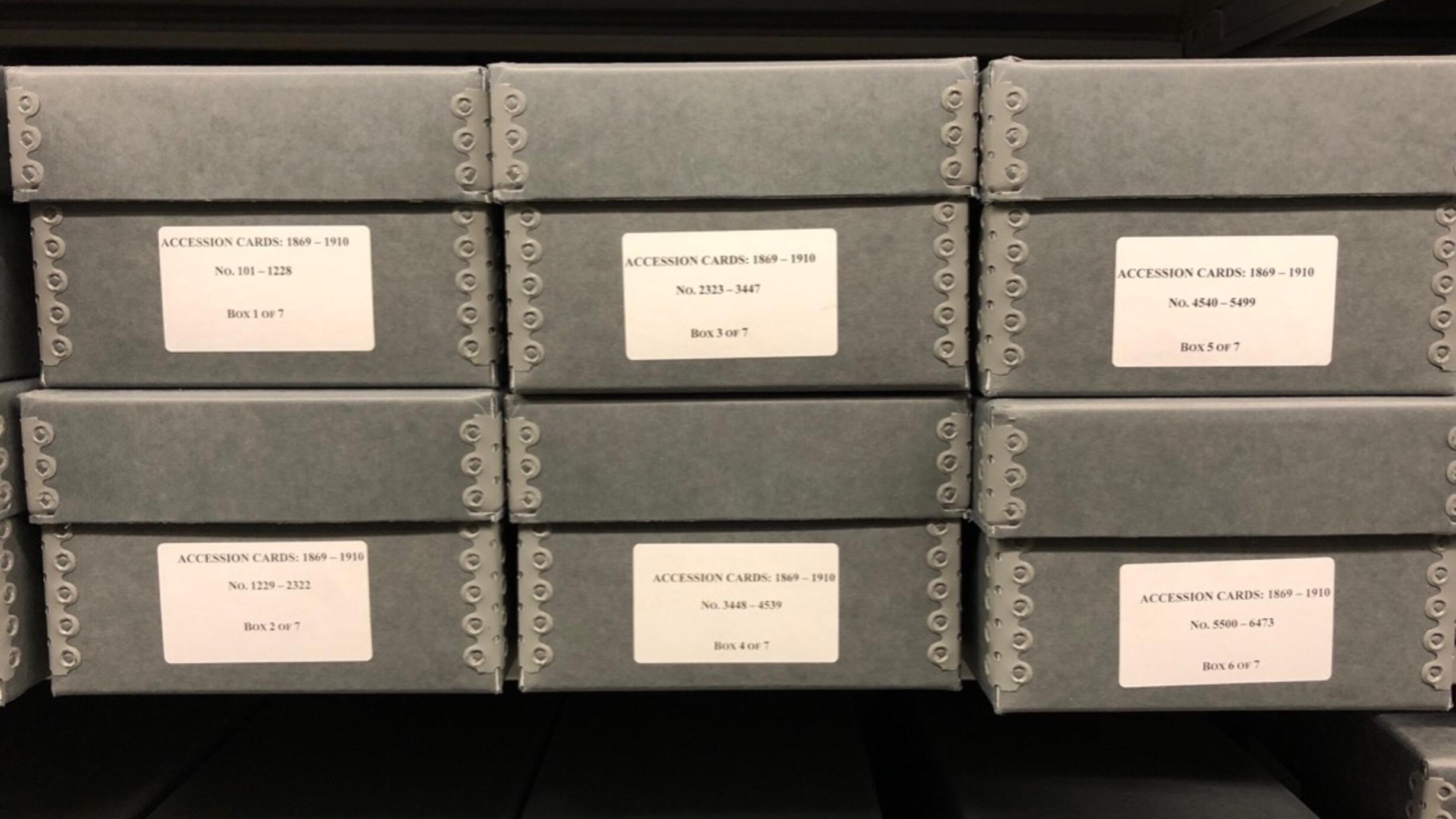Who’s Who - Notable benefactors’ donations and how they came to be a part of AMNH’s collection: Part II
by Alexis Fleming on
 Boxes from the American Museum of Natural History Accession Card Archive
Boxes from the American Museum of Natural History Accession Card ArchiveH. Knapp/© AMNH
The next installment in our series about unique specimen donations concerns the gifts of William Kissam Vanderbilt (1878-1944), great-grandson to railroad and shipping tycoon Cornelius Vanderbilt (1794-1877). Although William was best known for maintaining his family’s shipping interests and horse breeding, his wanderlust would spearhead the family’s naturalist and philanthropic interests.
In 1926, William approached Museum artist and taxidermist William E. Belanske (1892-1945) to sketch and record findings on his Voyage to the Galapagos Islands - the island group made famous by naturalist, geologist, and biologist Charles Darwin's publication on the theory of evolution On the origin of species (1859). After this tour, later known as the Ara Expedition to Galapagos Islands, Belanske would depart from the American Museum of Natural History to work on Vanderbilt’s personal collection, some of which he may have later helped to persuade Vanderbilt to donate to the Museum.
©Theodore C. Marceau
In the fall of 1927, the Museum’s Living Invertebrates Department would receive “15 Specimens of Coelenterates (Pyrosoma aherniosum).” (1) Pyrosomes, meaning “fire bodies” for their bright luminescence, are tubular, jellyfish-like groups of zooids averaging 2 centimeters in length individually but collectively could be as large as 30+ feet and are usually found in warm waters near the north and south equator. They are native to Southern Africa but also found off the coast of Ecuador and the Mediterranean.
©AMNH
Peter Daly/©AMNH
This acquisition of specimens is so unique to the Museum collection that it was nearly 20 years later before we received another sample of the Pyrosoma genus, Pyrosoma spinosum, from the Smithsonian in Washington D.C. (2) Although remarkably similar, this species is better known as the Giant Fire Pyrosome, found to be up to 65 ft long and 4 ft in diameter, "at depths between 460m (1,500ft) and 3,000m (10,000 ft)” ...seldom seen by humans and found primarily in the Arabian Sea.
©AMNH
Using the Museum Digital Asset Management System (DAMS), we found another card referencing Vanderbilt’s Ara Expedition for “29 framed paintings of fish,” painted by Belanske and once belonging to the Museum’s Department of Ichthyology. (3) These painted works are now located in the rare book room, along with a number of self-published books, one of which discusses Belanske's work during the 1926 Galapagos expedition.
©AMNH
Each of the accession record cards shown in this post are physically housed in different boxes, under different headings. It is only with the DAMS that we are able to link them together, across departments, donor names, expedition tags, and subject matter, providing further vantage points to explore our collections.
As always, thank you to the IMLS team and the Shelby White & Leon Levy Archive Initiative to better serve our collection, staff, and museum visitors. The IMLS Archival Digitization team at the Museum looks forward to continuing this much-needed digitization work.
This is the fifth post in a series about the Registrar’s Accessions Archive Digitization Project. This entry was written by Project Digital Archivist Alexis Fleming.
(1) American Museum of Natural History, Registrar, #27851
(2) American Museum of Natural History, Registrar, #39903
(3) American Museum of Natural History, Registrar, #27349